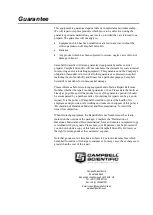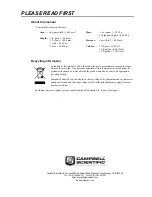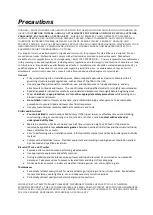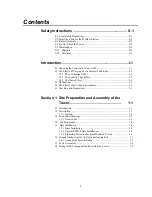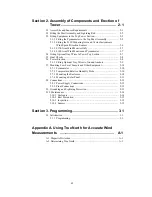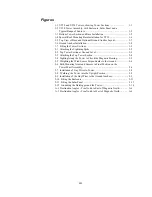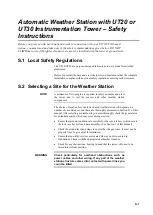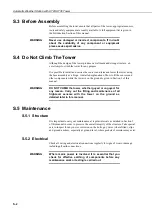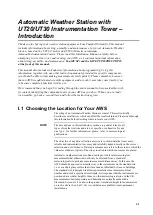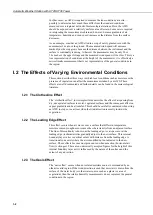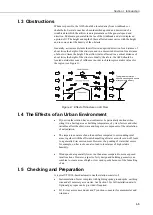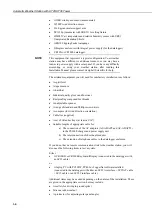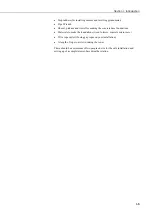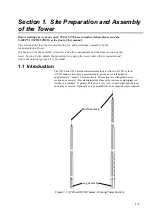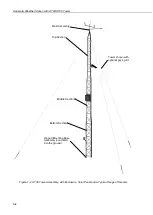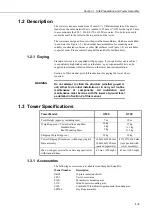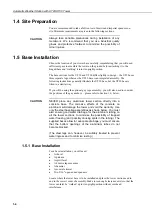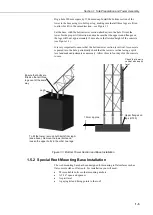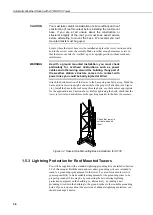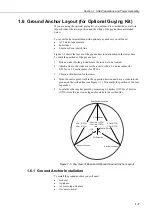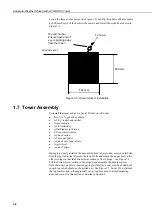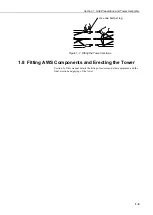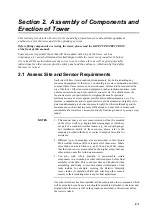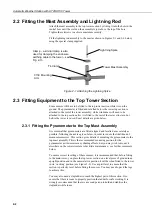
Section I. Introduction
I-3
I.3 Obstructions
Whenever possible, the AWS should be located away from windbreaks or
shelterbelts. Several zones have been identified upwind and downwind of a
windbreak in which the airflow is unrepresentative of the general speed and
direction. Eddies are generated in the lee of the windbreak and air is displaced
upwind of it. The height and depth of these affected zones varies with the height
and to some extent the density of the obstacle.
Generally, a structure disturbs the airflow in an upwind direction for a distance of
about twice the height of the structure, and in a downwind direction for a distance
of about six times the height. The airflow is also affected to a vertical distance of
about twice the height of the structure. Ideally, therefore, the AWS should be
located outside this zone of influence in order to obtain representative values for
the region (see Figure 1).
Figure I-1 Effect of Structure on Air Flow
I.4 The Effects of an Urban Environment
If your weather station has a net radiometer be particularly cautious when
siting it in a built-up area as building temperature, sky view factors and other
variables affect the short-wave and long-wave components of the calculation
of net radiation.
The impervious nature of an urban surface compared to surrounding rural
areas, together with the efficient channelling of water as surface run-off, leads
to a generally drier environment. However, the ponding of water that occurs,
for example, on flat roofs, can also lead to local areas of high relative
humidity.
Wind speeds are generally lower in urban areas compared to more exposed
rural locations. However, aspects of city design and building geometry can
combine to create areas of high or low wind speeds because of the funnelling
of air.
I.5 Checking and Preparation
A
typical
UT20/30-based automatic weather station consists of:
Instrumentation Tower complete with lightning spike, ground spike, earthing
wire and all necessary accessories. See
Section 3 for full installation details.
Optional guy ropes can be provided if required.
011E cross arm sensor mount and T-junction connector for anemometer and
windvane
Typical weather station
–
specific mounting and sensor
arrangements will vary

